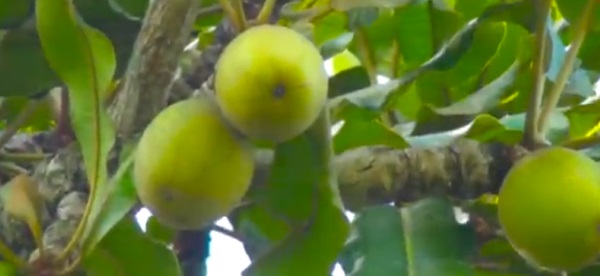Indigenous fruit trees in Sub Saharan Africa play an important role in sustaining livelihoods although many remain undomesticated. Shea nut is one of those indigenous wild fruit trees with enormous nutritional benefits. In Uganda, Shea nut is a dominant indigenous tree species in the Savannah woodlands of the North, West Nile, and North-Eastern sub-regions. According to conservationists, this tree is one of the key elements of the planet’s ecosystem helping to regulate water, sustainable shores as well as isolate and absorb carbon from the atmosphere. "So this tree is unique, it has so many values. And it has the best calorific value, that's why even people who come to this side when they are asking for charcoal they ask is it from Shea tree? Because of the heat which is produced is really very high compared to other tree species." Said, Onyango Patrick – District Forest Officer, Otuke.
The trees provide a home and food for many other plants, insects, birds, and mammals. But the species is among the 800 tree species representing 10% of the planet's trees being threatened with extinction due to degradation or destruction for fuel use, land for agriculture and unsustainable timber production. Shea Nut trees are not traditionally planted in a domestic manner but rather selectively managed through agroforestry systems. “You don’t necessarily have to plant it, it is stubborn that when you plant it, it may not even germinate, it needs to take its natural process.”
In terms of importance, its oil is second to palm oil. “You can even use it for protection against the dangerous rays of the sun. And when you rub it, it is also medicinal that it relieves joint pains and also it heals wounds, swelling, and bruises. So you can see its value.” Said, Mary Gorreti Kitutu – State Minister for Agriculture and Environment. Shea Nut is a strong tree that cannot be destroyed by termites. It matures late, bearing its first fruits at 30 years. Charcoal burning is steadily reducing the trees’ numbers although some residents in communities with the species have decided to put up a fight. “We are now protecting, conserving the Shea tree. We are now looking at the Shea tree as our gold of Otuke.” Said, Sarah Ajan – Secretary, MOO YAO Women Group. Shea nut fruits take 4-6 months to ripen. Each tree gives an average yield of 15-20 kg of fresh fruits with an optimum yield of 45 kg. These fruits are harvested between April and August every year.
Government and the United Nations Development Programme have a project to protect the Shea nut tree especially naturally and Karamoja sub-region is where they provide the much-required nutrients to the food insecure community. “The objective of the project is to protect the bio-diversity from existing and emerging threats.” Okiria Ateker James – Project Manager, Kidepo. A number of groups in Otuke, Abim, Kitgum, Agago and elsewhere are benefiting from the project. These groups have undergone different pieces of training on marketing strategies, postharvest handling practices, conservation of Shea trees and extracting oil from the nuts. “They collect the Shea nut, they bring it here and then we process with them, then we market some and some they consume it. We sell it as Shea oil; these are mainly the two products that we are marketing.” Said, Oryem Edward Basil – Beneficiary. Different Shea tree varieties have been tested for generic visibility with a possibility of developing individuals with the dues footing a period of 4-5 months. It is expected that this will increase the trees’ commercial value.

